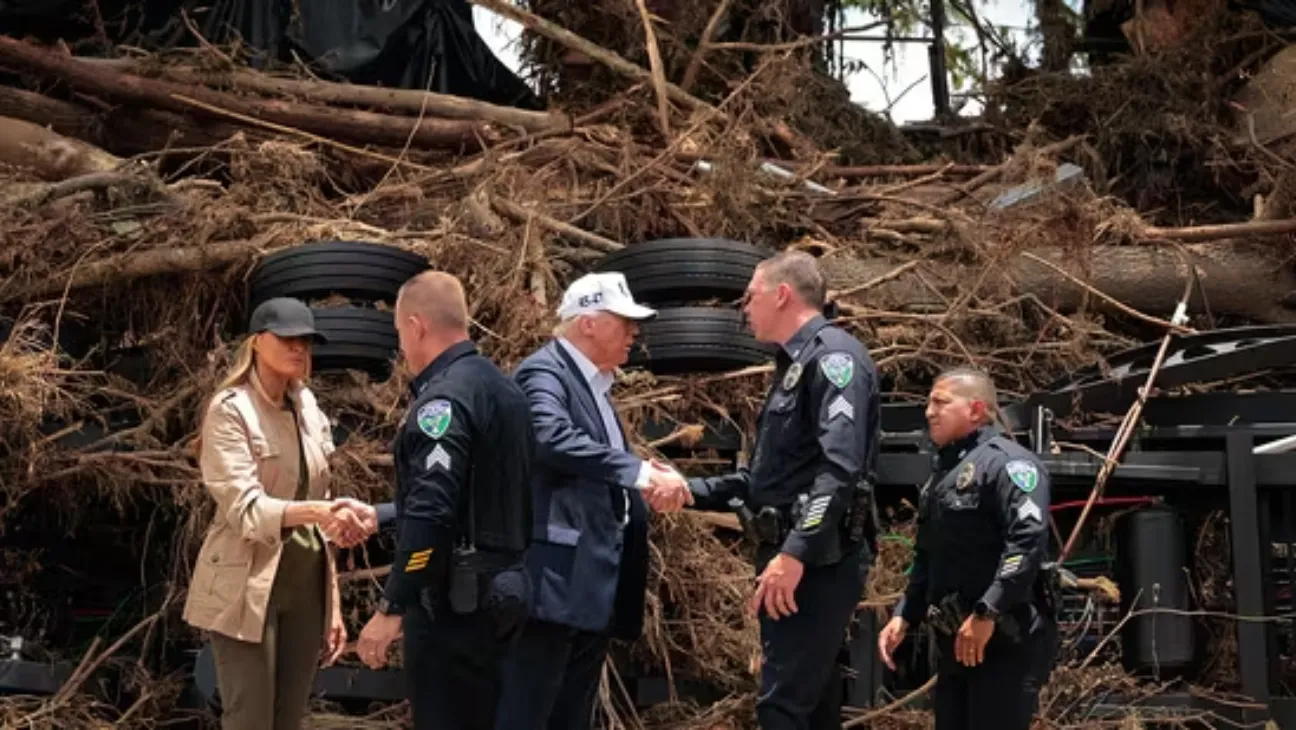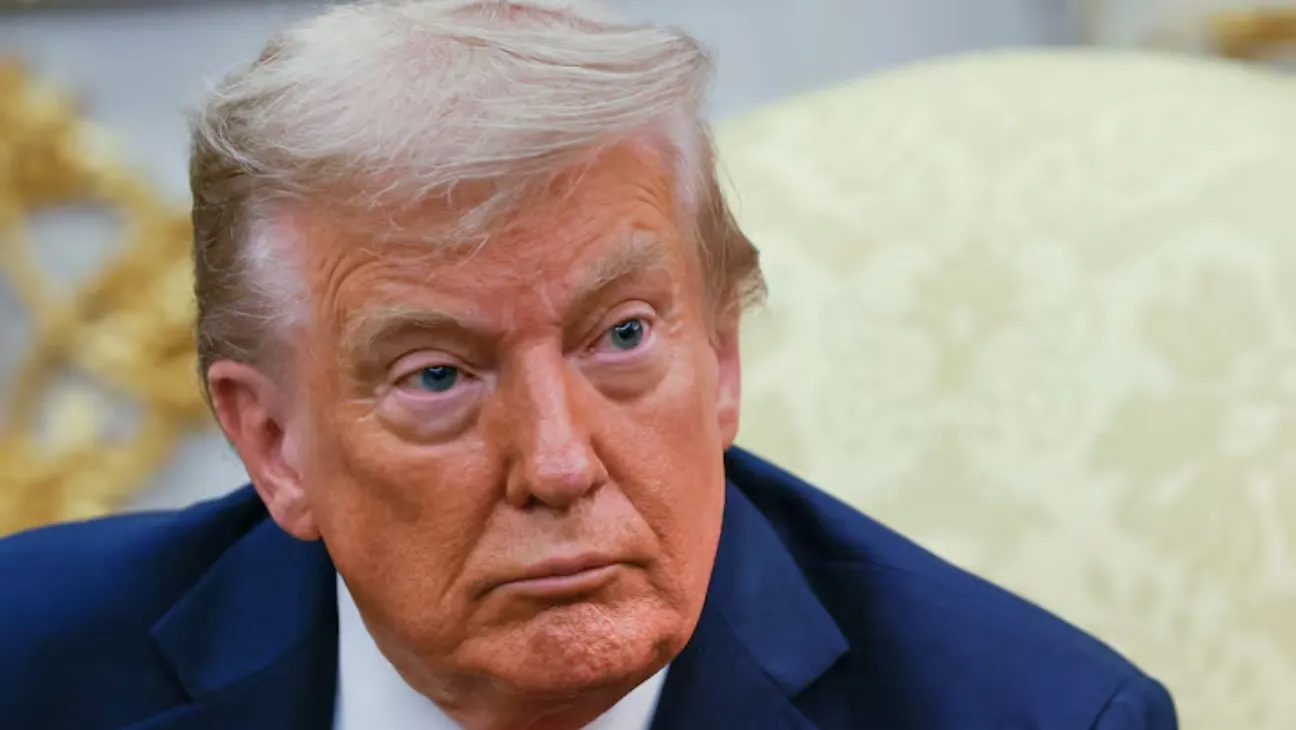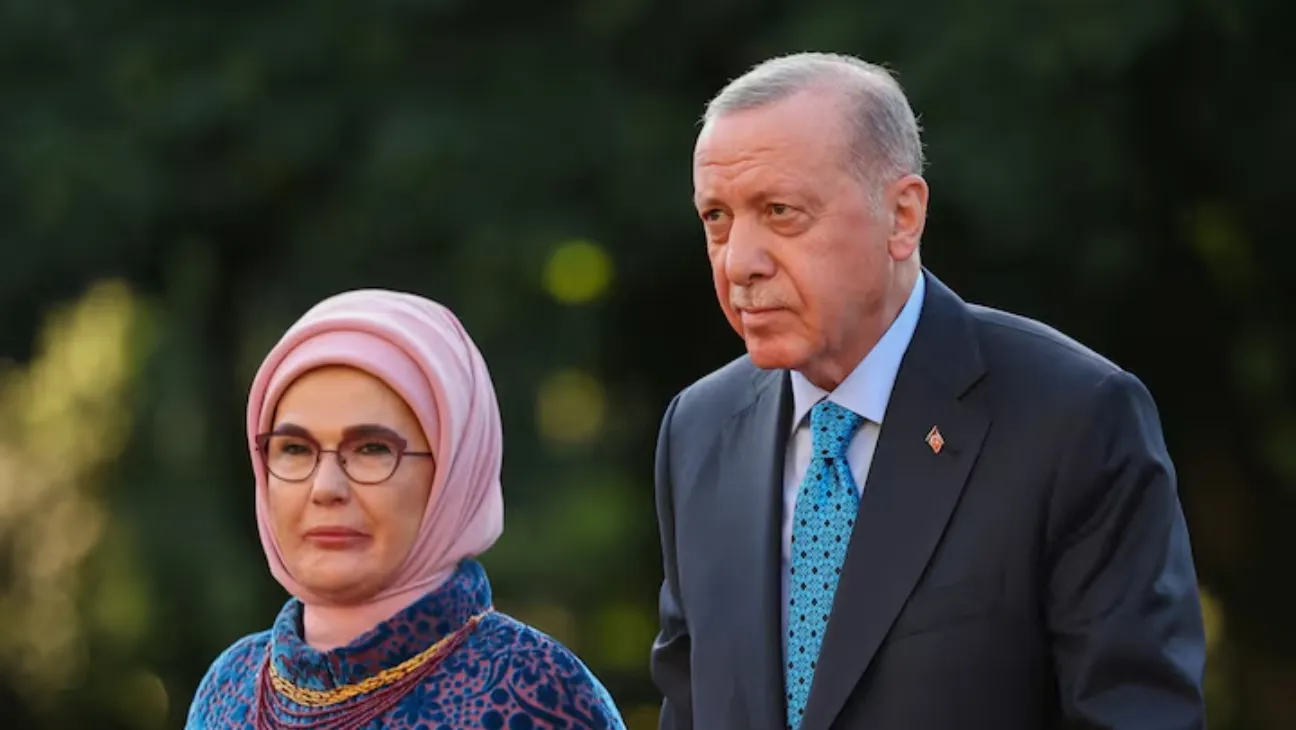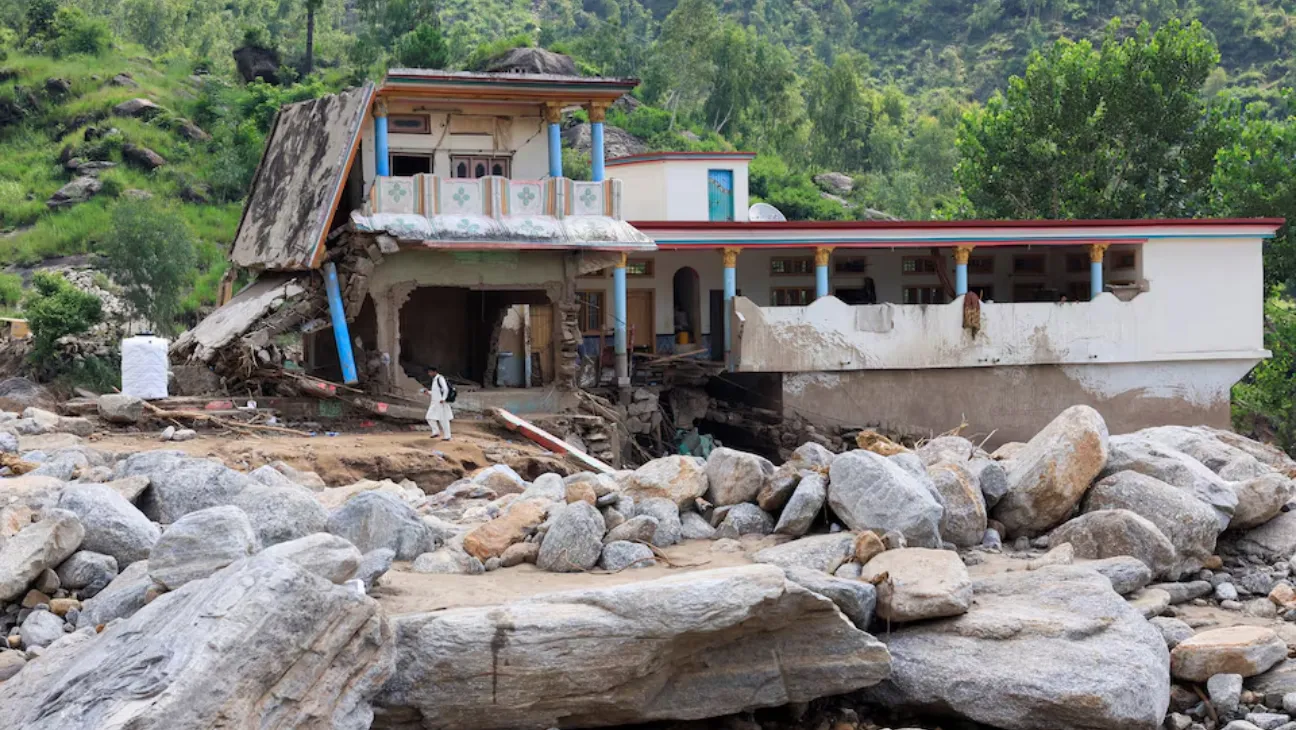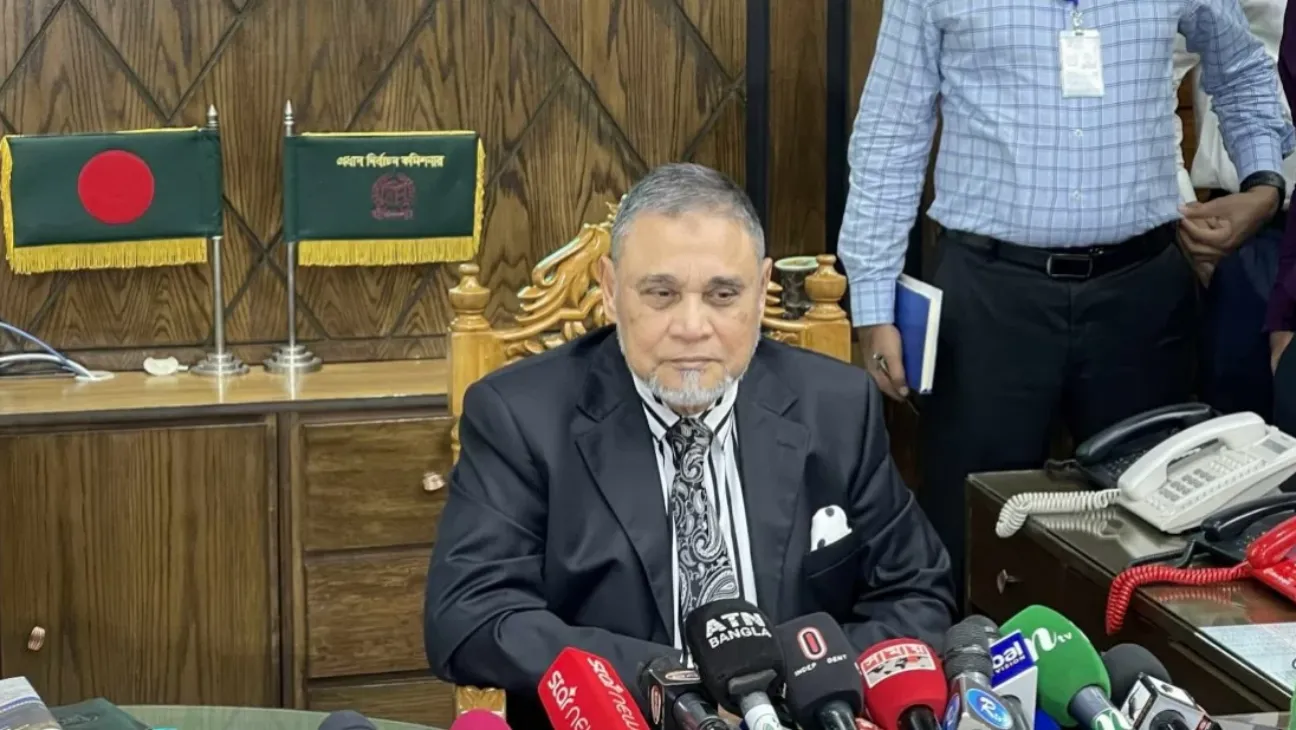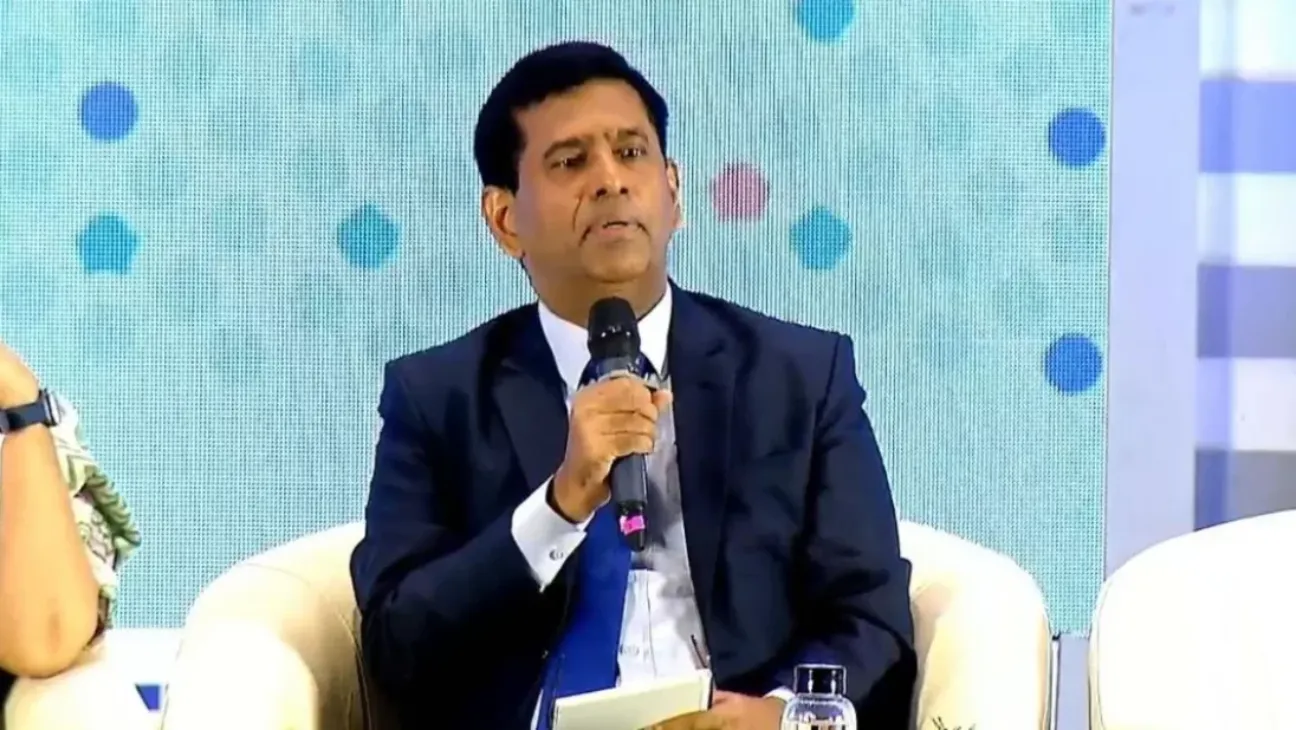President Donald Trump arrived in Texas on Friday to assess the damage caused by severe flooding that has killed at least 120 people. The administration has called the disaster a “once-in-a-lifetime event” as communities across Central Texas continue grappling with the aftermath.
Trump was accompanied by First Lady Melania Trump and Governor Greg Abbott during a field briefing near a firetruck, surrounded by fallen trees. Officials provided maps and updates on the response efforts.
In his white ‘USA’ cap and dark suit, the president said nothing, simply listening as first responders walked him through the wreckage. Wearing olive trousers and a khaki jacket, Melania Trump stood with him on a day defined more by gravity than style.
Later, the couple posed for photos with police and emergency crews. According to the White House, the president will also meet with first responders and families impacted by the floods and will receive a full briefing at the state’s emergency operations center.
FEMA policies raise questions
The administration’s broader approach to disaster management still includes plans to reduce federal involvement by scaling back FEMA, shifting more responsibility to individual states.
While the overall strategy is still intact, officials have dialed back their messaging following the July 4 floods. Nevertheless, the approach continues to raise red flags, particularly in comparison to recent federal disaster responses.
Backlash over State Department layoffs
While Trump was in Texas, attention turned to Washington, where the State Department confirmed another round of layoffs at the Office of the Coordinator for Afghan Relocation Efforts (CARE).
Jessica Bradley Rushing, a former CARE staffer, said she was shocked to receive a dismissal notice despite being on administrative leave.
“I never even anticipated that I could be at risk,” Rushing told the Associated Press. “Then I opened my email and saw that I also got the RIF notice.”
She said her remaining colleagues were “watching sort of this carnage take place within the office.”
The American Foreign Service Association (AFSA), which represents U.S. diplomats, strongly condemned the reductions. In a statement, it said the cuts were “untethered from merit or mission” and warned of long-term consequences.
“In less than six months, the U.S. has shed at least 20 percent of its diplomatic workforce through shuttering of institutions and forced resignations,” the group said. “Losing more diplomatic expertise at this critical global moment is a catastrophic blow to our national interests.”
Timing under scrutiny
The 18 percent workforce reduction, announced the same day as Trump’s Texas visit, comes during rising global instability. Critics argue that the decision to downsize diplomacy now sends the wrong message.
The White House has not responded publicly to the AFSA’s statement.
For the moment, Trump’s attention remains on Texas. But questions surrounding disaster readiness and foreign policy staffing continue to build back in Washington.

